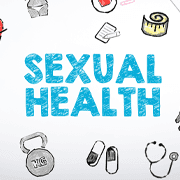Different Types of HPV: High and Low Risk Strains
In This Article
Different Types of HPV: High and Low Risk Strains
Parvathy
Updated on February 12, 2024
Medically verified by Dr. Pournami
Fact checked by Dr. Arya

Wellness
10 mints
Have you ever heard of HPV? Human Papillomavirus or HPV is one of the most common sexually transmitted infections (STIs) worldwide.
It affects millions of individuals every year. HPV can pose minimal to serious health issues. It can even lead to cancer.
Are you someone suffering from HPV and curious to know about its types? Wondering if you have the high risk or low risk strains?
Understanding the difference between high and low risk strains of HPV is crucial for making informed decisions about sexual health and preventive measures.
Karepedia is here to guide you and give you an insight on both high and low risk strains of HPV.
Human Papillomavirus
Here’s a little knowledge on the Human Papillomavirus infection, also called HPV.
-
It is a viral infection which causes warts in different parts of the body.
-
It is the most common sexually transmitted infection. There are over 100 types of HPV.
-
The majority of HPV strains are harmless, and they are low risk ones. But there are also some strains of HPV which are categorised as high-risk ones which have serious effects. 
-
Around 40 kinds of HPV affect genital area such as the vulva, vagina, cervix, rectum, anus, penis, and scrotum as well as your mouth and throat. These are spread through sexual contact. Genital HPVs are very common. 
-
Most genital HPVs are not harmful, and they disappear on their own. But some of them can lead to genital warts or even cancer.
Low-Risk HPV
Here’s what you must know about low risk HPV:
Type 6 and Type 11 are the two types of HPV that cause genital warts. These are not harmful and are regarded as low-risk HPVs.
What are Genital Warts?
-
These are skin coloured or whitish bumps that appear in genital areas. It can be one wart or more which can be either big or small. ‘
-
Sometimes they can be irritating as well but most times they are not.
-
In women, genital warts appear on the vulva, but it can also appear near anus, on the cervix or in the vagina.
-
In men, genital warts appear on the penis and scrotum or around the anus.
How Does One Get Genital Warts?
-
These are caused by having skin-to-skin contact with an infected person during vaginal, anal, and oral sex.
-
It is more likely to pass to the other person when there are symptoms visible.
-
It can be passed to a baby during childbirth, but it is very rare.
-
It takes several weeks to develop genital warts. It may even take weeks, months or years for genital warts to develop after having sexual contact with someone who has the infection.
-
Some people get warts once and never again but there are also some people who get genital warts more than once.
 10mint
10mintSexual Health Matters: How To Maintain Your Sexual Health ?
 10mint
10mintYour Guide to Sexual Health Screening and Preventive Measures
 10 mints
10 mintsSTDs in Women: Comprehensive Guide on Symptoms and Treatments
Get a Callback Now
High-Risk HPV
Here’s what you should know about the high risk strain:
-
Some HPV types lead to cancer, especially type 16 & type 18 which causes the majority of cancer. These are called high-risk HPVs.
-
Cervical cancer is mostly associated with HPV, but HPV also causes cancer in the vulva, vagina, penis, anus, mouth, and throat.
-
Most people with high - risk HPV will not have any symptoms until it causes serious health issues.
-
Therefore, regular check-ups are very important. Testing will help to find abnormal cell changes in the body.
-
A Pap test, sometimes called a Pap smear, finds abnormal cells on your cervix caused by HPV. It involves collecting cells from the cervix. The doctor sends the sample to a lab, which checks for abnormalities in the cervical cells.
-
This does not directly test for cancer or HPV, but when such abnormal cell changes are found, a doctor can treat them so that they don't become serious. There is no test to find high-risk HPV in vulva, penis, anus, or throat.
-
It is to be noted that HPV does not have any symptoms but if it turns to cancer, it has certain symptoms. They are:
-
Penile cancer- symptoms include changes in colour of skin of penis or appearance of painful sores in the penis.
-
Anal cancer- symptoms such as anal bleeding, pain in anus, itching and irritation, discharge or changes in pooping.
-
Vulvar cancer- changes in colour or thickness of skin of vulva, serious pain, itching or a lump are the major symptoms.
-
Throat cancer- sore throat, ear pain that does not disappear, constant coughing, pain or difficulties in swallowing or breathing, loss of weight or lump in neck are the symptoms.
Treatment
There is currently no treatment for HPV. But treatments will resolve the health problems caused by the infection.
Around 20-30 percent of warts disappear over time. Treatment helps to reduce the outbreak as well as discomfort. This may include applying a cream or gel to the affected area or removing the warts completely.
Surgery is necessary to remove precancerous cells caused by high-risk HPV. The treatment in HPV related cancer is the same as the cancer treatment for other areas.
Chemotherapy and radiation are some examples of treatment methods for cancer.
Prevention
One can reduce the risk of getting HPV by:
-
Getting HPV vaccine
-
Using barrier methods such as condoms, dental dams during sexual intercourse
-
Limit the number of sexual partners
-
Gardasil 9 is the HPV vaccine available in the U.S. This vaccine protects from high -Risk HPV as well as low - risk HPV.
-
The Center for Disease Control recommends that everyone should receive the vaccine for HPV at ages 11-12 to reduce the chances of getting HPV related cancer.
-
This vaccine comes in two doses with a gap of 6-12 months.
-
Teenagers and adults of the age group 15-26 should receive three doses of vaccine.
-
Regular screening prevents the risk of getting HPV related cancer.
-
If any cell changes are found at an early stage, it can be cured effectively.
Risk Factors
The risk factors of HPV include:
-
Multiple sexual partners: Having multiple sexual partners will increase the risk of getting genital HPV. Having sexual intercourse with a partner who has multiple sexual partners will also increase the chances of getting the infection.
-
Age: Common warts that appear in hands or fingers are mostly in children whereas genital warts appear mostly in teenagers and young adults.
-
Weak immune system: People who have weak immune systems are at the risk of getting HPV.
-
Damaged skin: Those who have damaged skin are more at risk of developing warts.
-
Personal Contact: Touching warts or having contact with surfaces with the infection will increase the chances of getting HPV.
Human papillomavirus infection, also called HPV, is a viral infection which causes warts in different parts of the body. It is the most common sexually transmitted infection. 
The majority of HPV strains are harmless, and they are low-risk ones. But there are also some strains of HPV which are categorised as high-risk ones which have serious effects.
Type 6 and Type 11 are the two types of HPV that cause genital warts. These are not harmful and are regarded as low-risk HPVs. Genital warts are skin coloured or whitish bumps that appear in genital areas.
Some HPV types lead to cancer, especially type 16 & type 18 which causes the majority of cancer. These are called high-risk HPVs.
Surgery is necessary to remove precancerous cells caused by high-risk HPV.  The treatment in HPV related cancer is the same as the cancer treatment for other areas.
Preventive measures include HPV vaccine, protection while having sex, regular checking.
Risk factors include multiple sexual partners, age, weak immune system, damaged skin, and personal contact.
Source Links
medicalnewstoday

